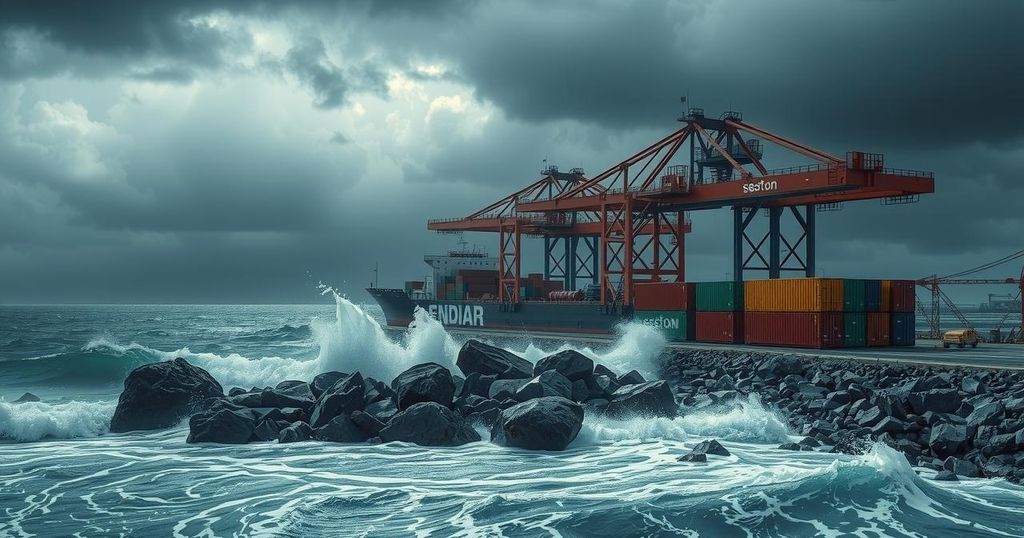Port Hedland Closes as Tropical Cyclone Zelia Intensifies

The Port Hedland, Australia’s largest iron ore port, is closed due to Tropical Cyclone Zelia, which is intensifying into a category three storm. Residents are prepping for impact as authorities mobilize resources for safety. The cyclone may bring destructive winds and substantial rainfall, affecting local infrastructure and prompting evacuation plans.
Australia’s largest iron ore port, located in Port Hedland, has been closed in preparation for Tropical Cyclone Zelia, which is projected to develop into a powerful category three system. The cyclone intensified to a category two classification, prompting regional authorities and multi-national mining companies to initiate safety protocols as it approached the Western Australian coast.
Local resident Chris Ward reported that preparations for the cyclone were progressing well, with the town’s population of approximately 16,000 engaged in stocking up on essential supplies. “The rain has well and truly started. People are stocking up at the supermarket on food and water, and tying down stuff around their homes,” he stated, noting increased airport activity as workers evacuated in anticipation of the storm.
The Bureau of Meteorology warned that the cyclone could bring destructive wind gusts reaching up to 220 kilometers per hour, especially between Whim Creek and Wallal Downs. The Pilbara Ports Authority acted promptly to clear vessels from berths and anchorages before enacting the port’s closure, while BHP suspended non-essential travel to Port Hedland, although operations at iron ore mines continued as planned.
Efforts are being made to ensure that rural, Indigenous, and isolated communities have access to necessary supplies, with the cyclone heading toward the east Pilbara coast. Additional personnel, flood response boats, and aircraft have been positioned in anticipation of the storm’s impact, and an evacuation center is expected to be established at Port Hedland when warnings escalate to “watch and act.”
Rainfall in excess of 500 millimeters is anticipated for the region, with residents residing in a designated warning zone from Bidyadanga to Dampier urged to stay informed about developments. Major roads and arterial routes in northern Western Australia are expected to be affected for up to a week following the cyclone’s passage.
Meanwhile, in north Queensland, a clean-up is underway after severe flooding endured for nearly two weeks, resulting in two fatalities and hundreds of evacuations. Although the immediate danger has diminished, flood warnings remain across the affected region as communities begin to recover from record rainfall events that disrupted daily life and damaged infrastructure.
The closure of Port Hedland highlights the significant impact of Tropical Cyclone Zelia as it approaches Western Australia. Authorities have mobilized resources and initiated safety measures to protect residents and essential operations. As the cyclone is expected to strengthen and rainfall amounts rise, vigilance remains critical in the affected areas.
Original Source: thenightly.com.au







